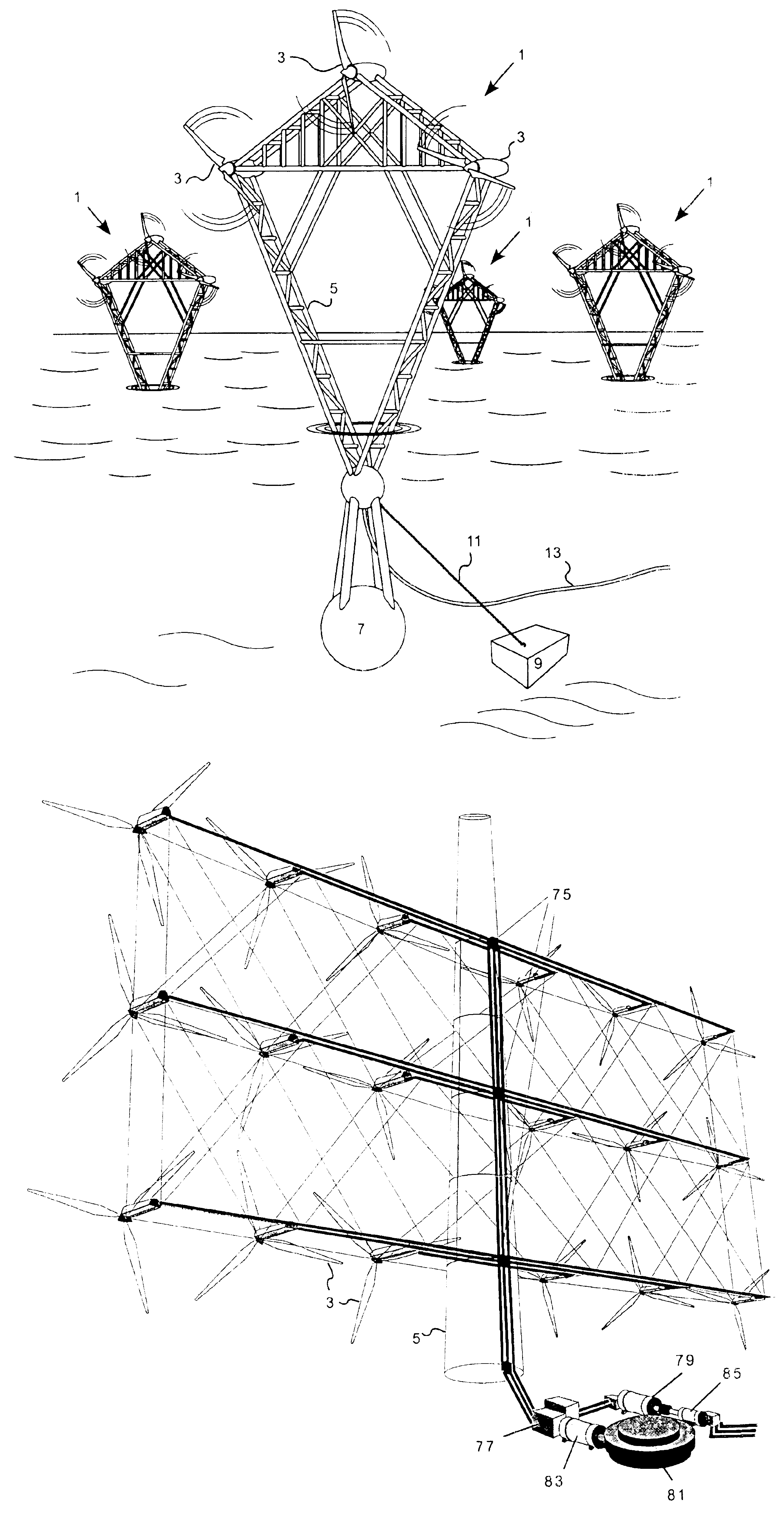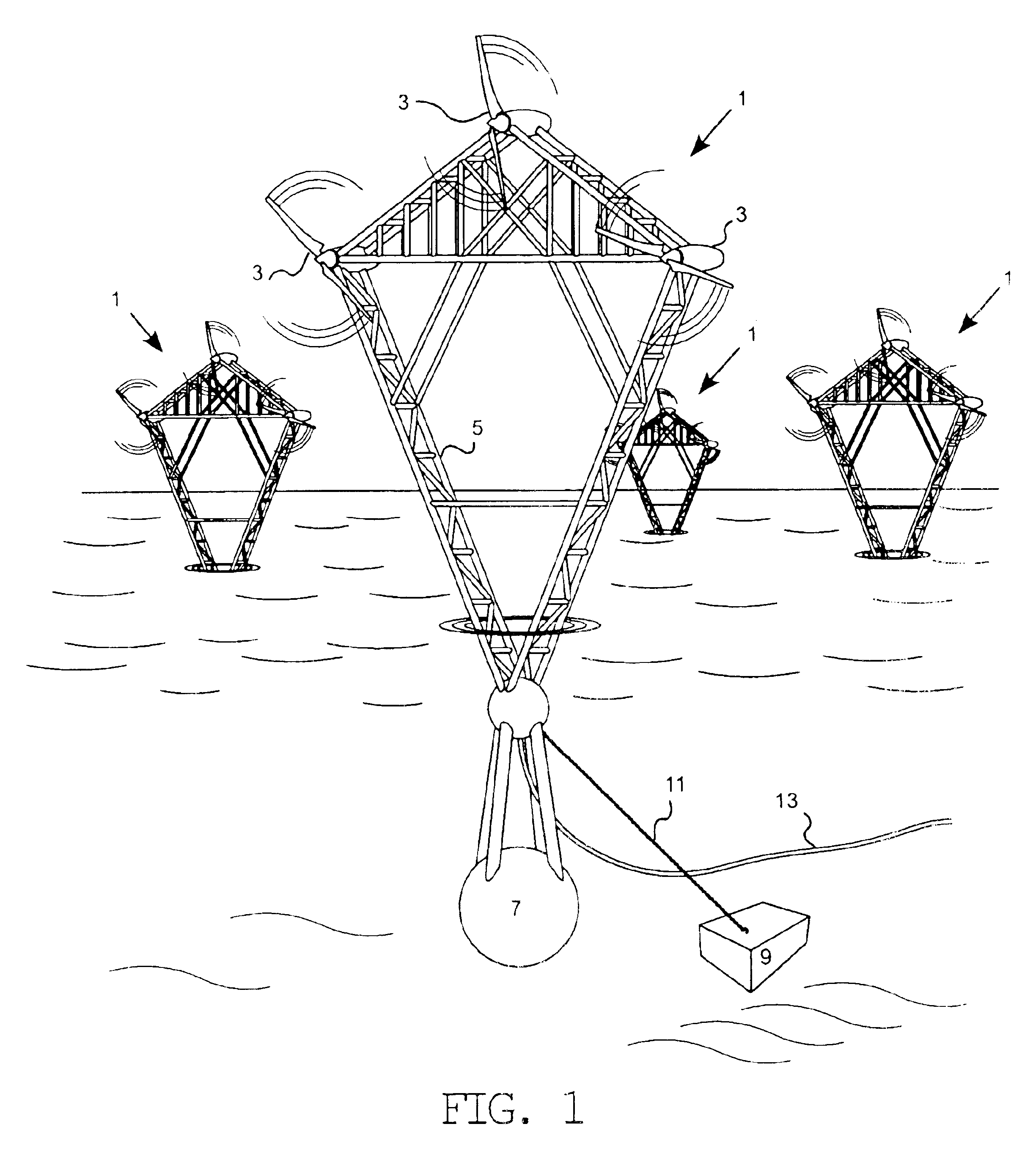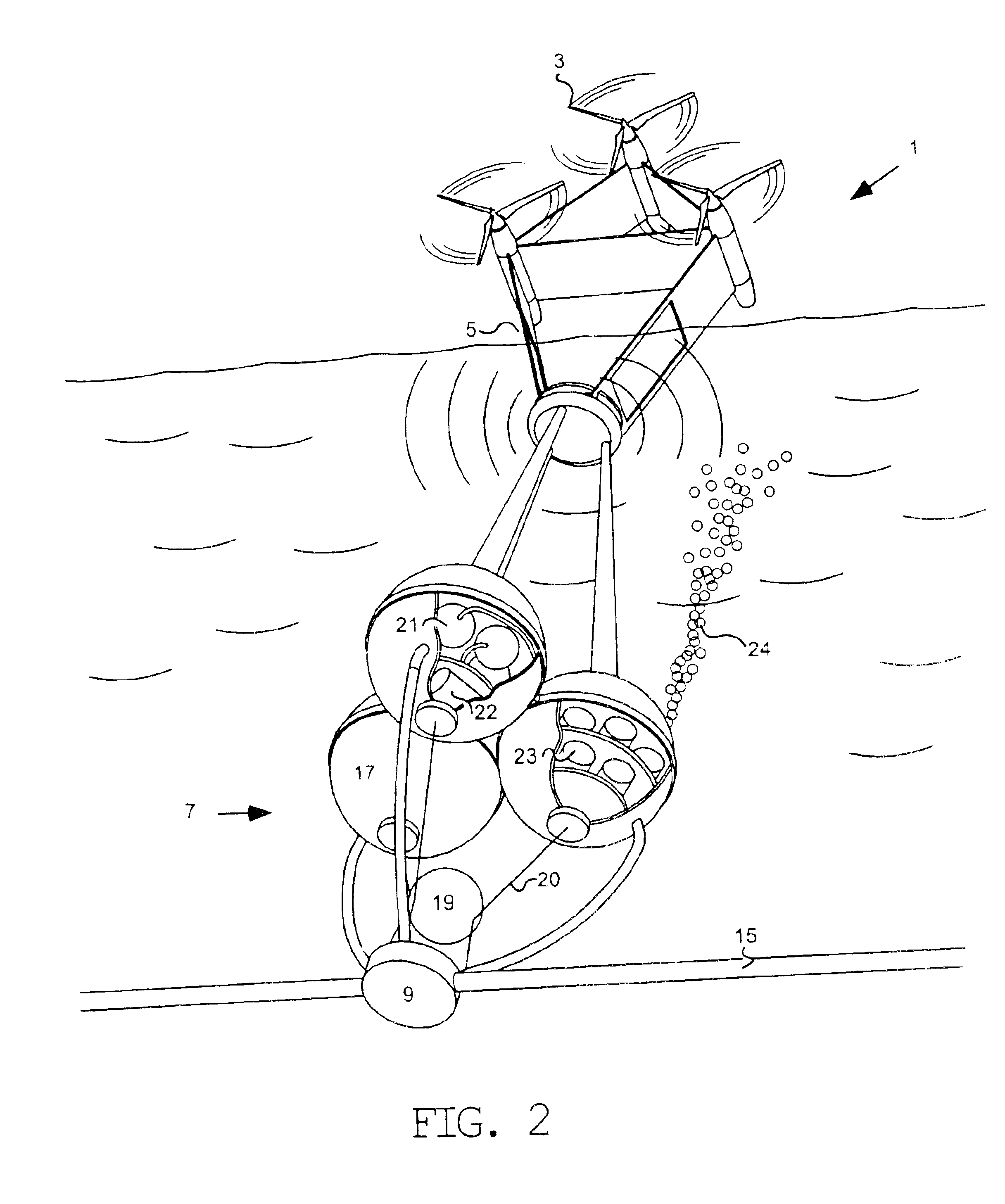Offshore wind turbine with multiple wind rotors and floating system
a wind turbine and floating system technology, applied in the direction of machines/engines, electric generator control, vessel construction, etc., can solve the problems of prohibitively large cost of this transmission system and may present navigation hazards in the foundation, so as to reduce the structural requirements of the tower and the ballast requirements of the hull. , the effect of reducing the weigh
- Summary
- Abstract
- Description
- Claims
- Application Information
AI Technical Summary
Benefits of technology
Problems solved by technology
Method used
Image
Examples
Embodiment Construction
[0042]In the following disclosure several embodiments of the invention are described to give illustrate (but not limit) the extent and usefulness of the invention. The term ‘wind turbine’ is used herein to describe the prime mover portion of a wind power production system and describes the aloft, non-tower, portions of the wind power production system. The term ‘wind turbine’ encompasses the drive train, gearbox, and generator for embodiments that include these elements. The word ‘rotor’ refers to the external rotating parts of a wind turbine, namely blades and a hub. As noted previously the word ‘windship’ is used herein to describe an offshore semi-submersible marine wind power system and the support structure for said system.
[0043]FIG. 1 shows four arrays of wind turbines 3, three to a tower 5, mounted at sea on windships 1 which are tethered to the seabed via anchors 9. In the foreground of FIG. 1 is an offshore wind turbine in the form of a windship 1 using three large rotors 3...
PUM
 Login to View More
Login to View More Abstract
Description
Claims
Application Information
 Login to View More
Login to View More - R&D
- Intellectual Property
- Life Sciences
- Materials
- Tech Scout
- Unparalleled Data Quality
- Higher Quality Content
- 60% Fewer Hallucinations
Browse by: Latest US Patents, China's latest patents, Technical Efficacy Thesaurus, Application Domain, Technology Topic, Popular Technical Reports.
© 2025 PatSnap. All rights reserved.Legal|Privacy policy|Modern Slavery Act Transparency Statement|Sitemap|About US| Contact US: help@patsnap.com



